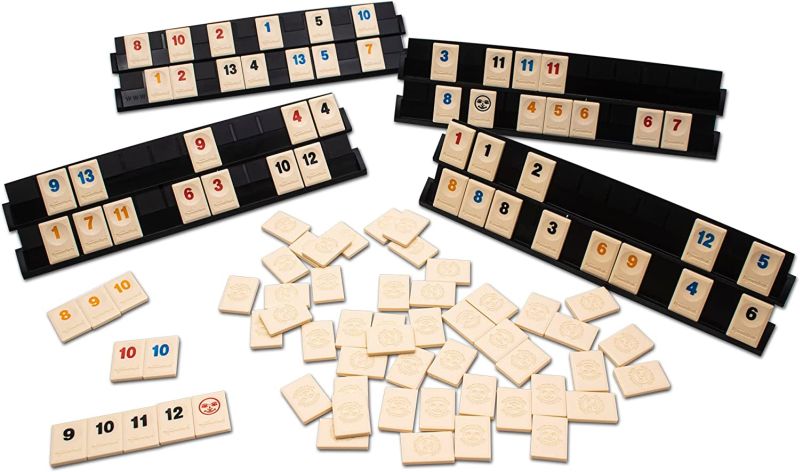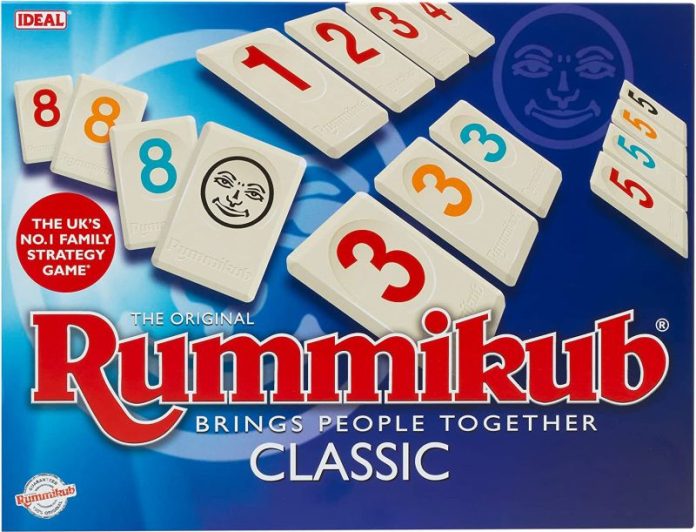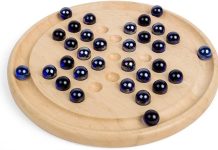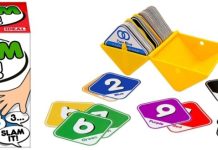Board games are excellent for bringing people together and having lots of fun. We play lots of them in our house and have regular game nights, sat around the kitchen table. We all look forward to playing a game of some sort in the evenings.
We have lots of games – board games, tabletop games, card games, challenge games and escape room games and they all have they different merits that make them fun and enjoyable.
With so many kinds of games available it can sometimes be hard to decide what to play. For this review, we were playing the classic Rummikub, a tabletop game that lots of people will be familiar with as it is also played as a very popular card game.
If you have ever played the card game Rummy, then you will be perfect for Rummikub – it is basically the same game, but it is a tile-based game rather than using cards. Rummikub could be described as a combination of Rummy and the tile matching game Mahjong. The layout looks very similar to another popular game – Scrabble, with the tiles arranged on racks.
Rummikub was first invented in the 1940s, becoming much more popular in the 1970s and is still going strong today, with a number of variations available including mini, travel, word and kid’s versions. It is suitable for 2-4 players, age 7+ and has a playing time of around 60 minutes.
In the box:
- 106 tiles (104 numbered; 8 sets 1-13 in 4 colours; black, blue, red and yellow, 2 Jokers)
- 4 racks and rack holders
- Instructions
The aim of the game is to be the first player to get rid of all your tiles by building number groups or runs. It is easy to play, but don’t be fooled, you do have to think strategically to win.
Before playing you will need to read through the rules and make sure that everybody understands them. They are easy to follow but it might be worth playing a few test rounds to grasp the concept and learning the difference between groups, runs and sets, what a meld is and how to manipulate and split tiles that are already in play.
To start, each player is given 14 tiles and they place these on their rack. The remaining tiles are placed face down on the table in-between the players. Each player then takes a tile from the pile and the person with the highest number starts. The tiles are then put back into the pile and mixed up again.

In the starting round players must lay down an initial meld. They must place a group or run on the table that values at least 30 points (you add up the numbers on the tiles). A group is a set of 3 or 4 tiles of the same number in different colours (but you can’t have 2 of the same colour). A run is a set of 3 or 4 consecutive number tiles in the same colour (e.g., 1, 2, 3, 4). If a player is unsuccessful a new tile must be taken from the pile in the middle of the table and that players turn ends. The next player then must lay 30 points and so on until all players have had a turn.
After the initial meld, when each player has had a turn and played their starting 30 points, going forward each player must play at least 1 tile from their rack, either adding a new group or run or manipulating one that has already laid (e.g., adding a red 4 to a sequence of red 1, 2, 3 already on the table). If a player can’t play a tile, they must take one from the pile and add it to their rack and their turn ends.
The game continues in this fashion, laying runs and sets or manipulating runs or sets that have already been played to create others, until one player has laid all their tiles on the table and called out ”Rummikub”. If you are playing more than one match, the losers add up the values of their remaining tiles and the total of all players is given to the winner as a positive score, while each loser receives a minus score to the value of their own remaining tiles. After a few games, the player with the overall highest number of points is the winner.
Overall, to be honest, this is a game that you are going to love or hate. Personally, I love it. I think Rummikub is a great game of thinking and strategy combined with a small helping of luck. We found that the instructions do take reading through a couple of times to fully understand the gameplay, especially for the youngest players so we would recommend watching some YouTube videos (as we did) to see gameplay in action and how the game works.
At the start of the game, play is a little slow, but after a few hands have been played and runs and sets start to build up on the table, it does get faster and much more interesting. And the more people playing, the better it is. With a time limit of 1 minute per turn, it is a good rule as waiting for another player to go through all the permutations in their head before taking their turn can be a bit tedious and could make the other players lose interest (although you might want to adapt this for younger players – we had 1 minute for the adults and 2 for the children).
I found it to be a fun and interesting game that gets you thinking and trying to outsmart the other players. It may be more suited to older children, teenagers and adults rather than 7 and 8 years olds but will definitely keep the family entertained at home during the cold winter nights.
The only issue I had with this version of the game was with packing it away. The tiles they are just placed loosely back into the box and do bounce around everywhere when the box is moved (I fear losing some if the box is dropped). I feel that a storage bag for the tiles would be an ideal addition so that the tiles could be stored better and stop tiles being lost.
I think that Rummikub Classic is a fun and challenging game for family and friends and great for an after dinner game night.
Rating: 4.5/5
RRP: £24.99
Available to buy from Amazon here.
![]()

















